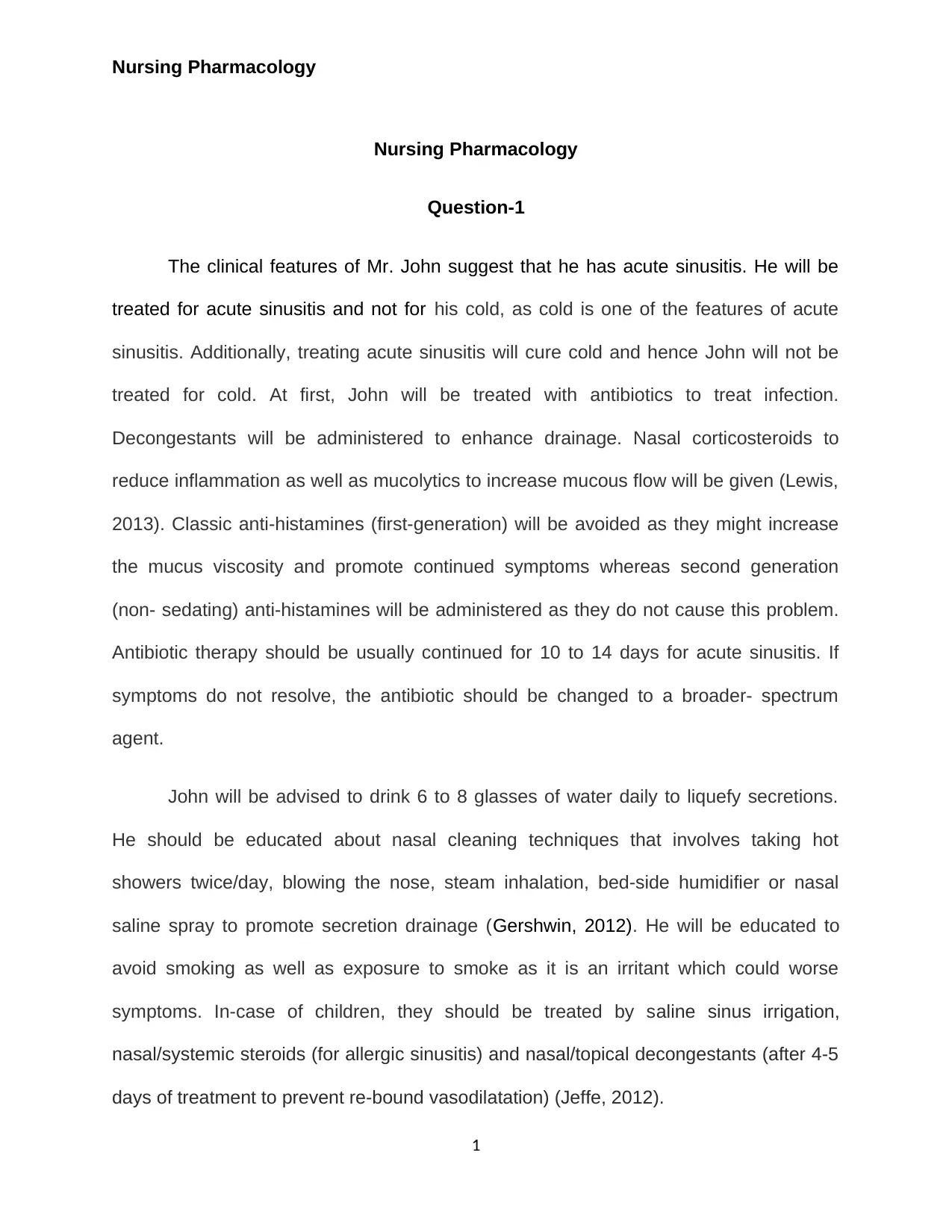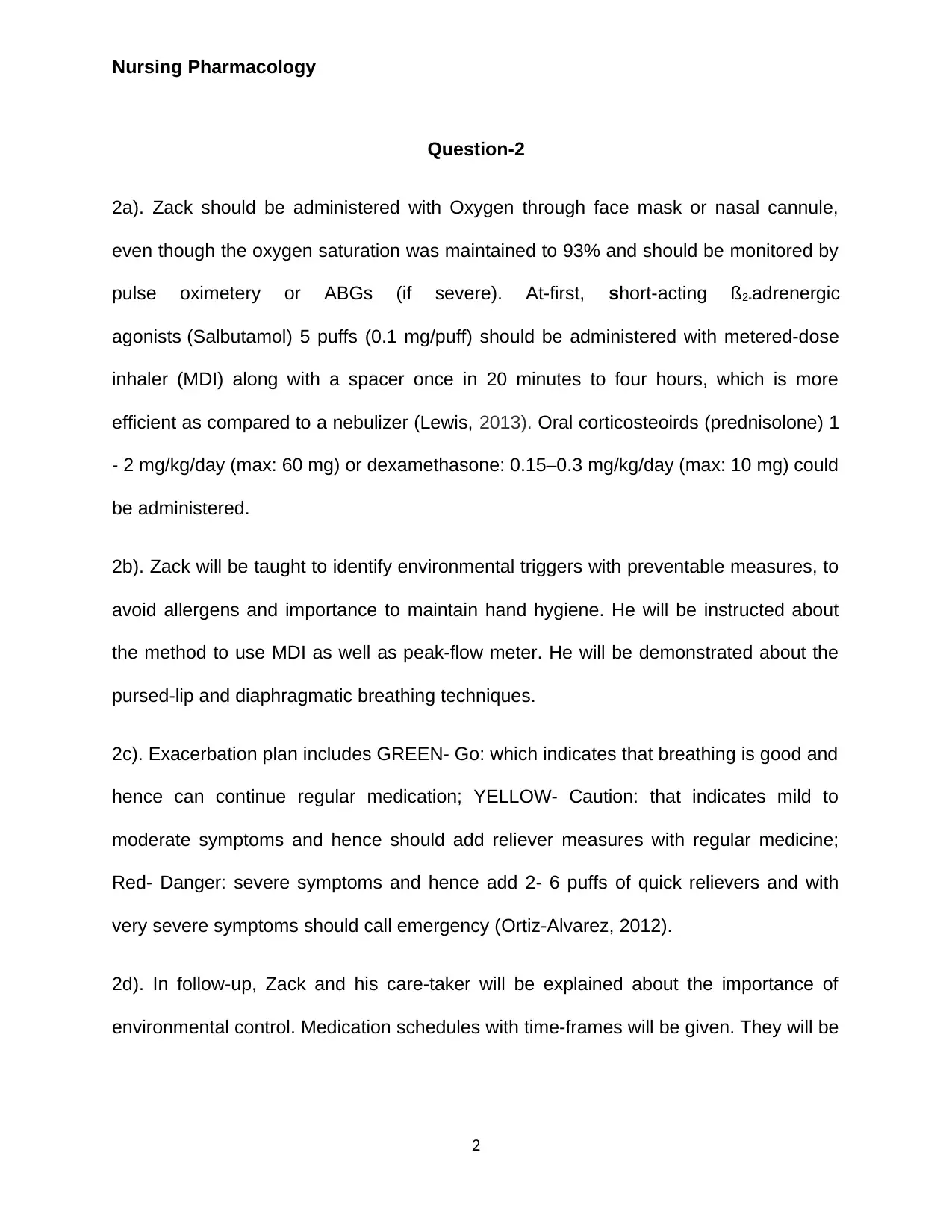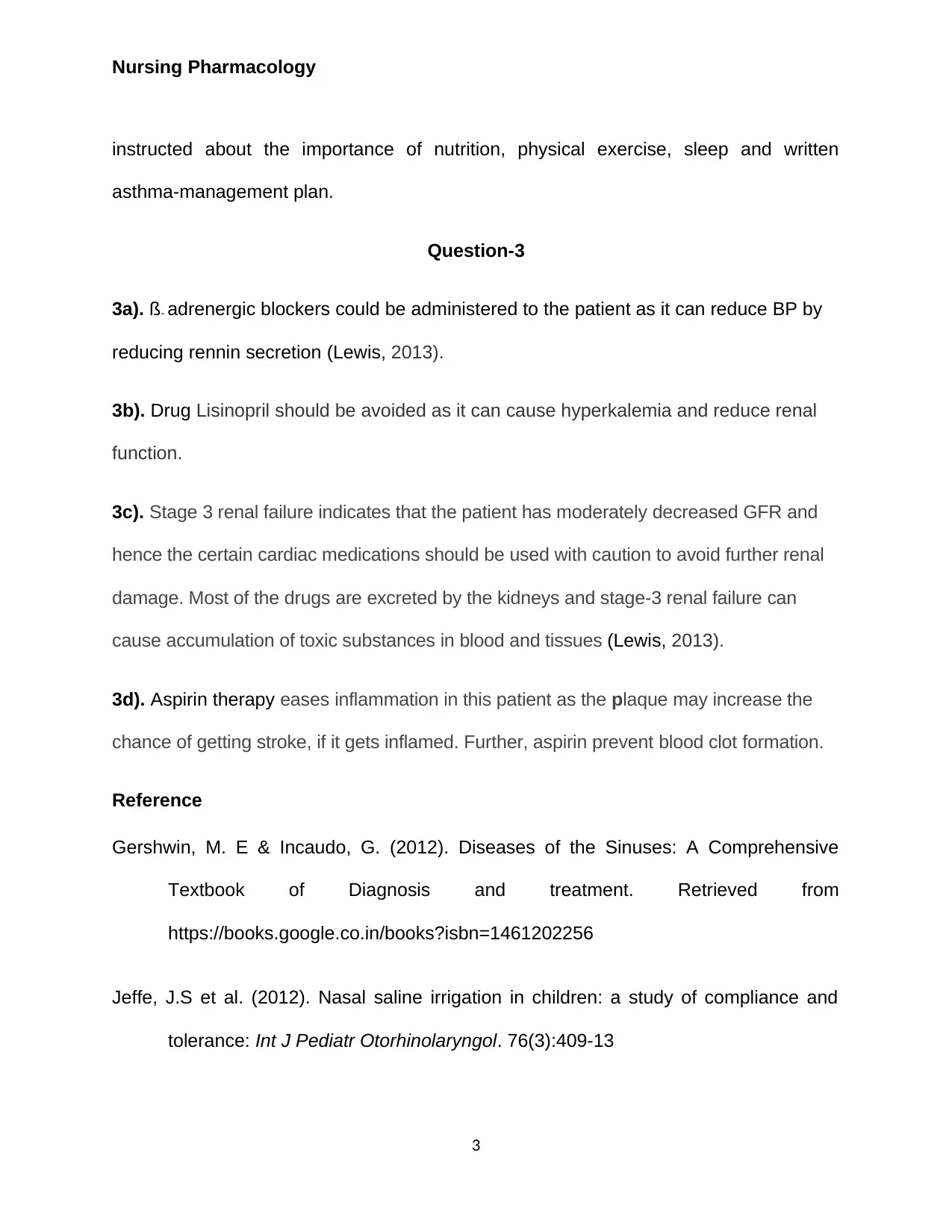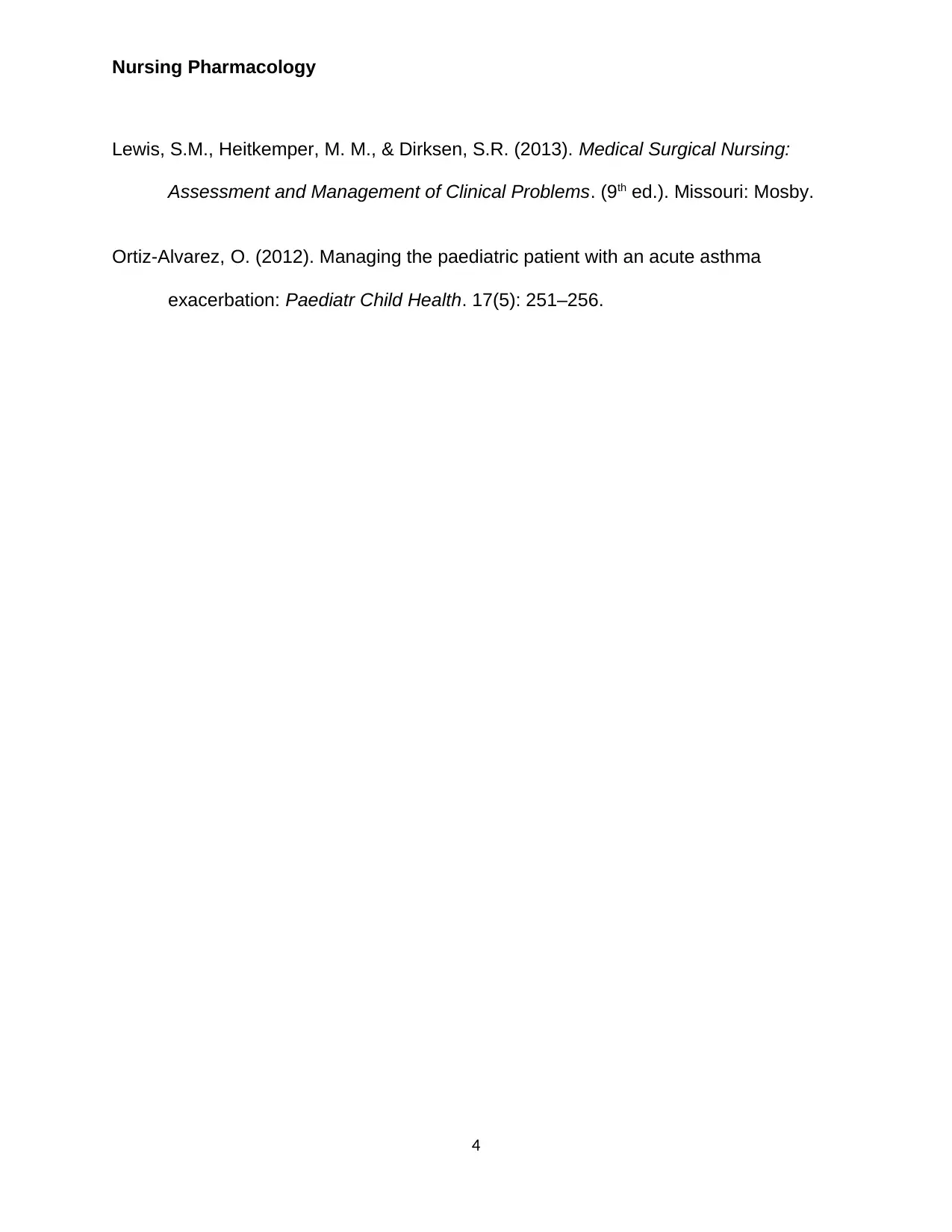Nursing Pharmacology: Acute Sinusitis, Asthma Exacerbation, and Renal
VerifiedAdded on 2023/06/15
|4
|865
|159
Homework Assignment
AI Summary
This nursing pharmacology assignment addresses the treatment of acute sinusitis, asthma exacerbation, and renal failure through detailed case studies. For sinusitis, the solution outlines antibiotic therapy, decongestants, nasal corticosteroids, and mucolytics, while advising against first-generation antihistamines. Patient education includes nasal cleaning techniques and avoidance of irritants. For asthma, the plan involves oxygen administration, short-acting ß2-adrenergic agonists, and oral corticosteroids, along with education on identifying triggers and using inhalers and peak-flow meters. An exacerbation plan is provided with green, yellow, and red zones, followed by instructions on environmental control, medication schedules, and the importance of nutrition and exercise. In the renal failure case, the assignment discusses the use of ß-adrenergic blockers, avoidance of Lisinopril, and cautions regarding cardiac medications due to decreased GFR, while highlighting the benefits of aspirin therapy for inflammation and clot prevention. Desklib provides students access to similar solved assignments and study resources.
1 out of 4






![[object Object]](/_next/static/media/star-bottom.7253800d.svg)